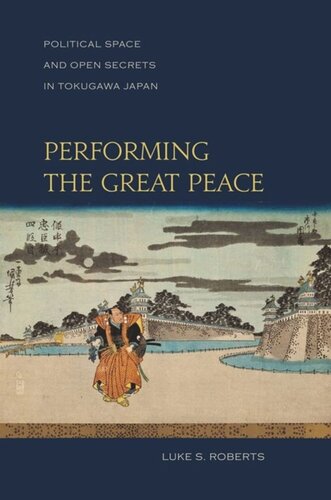

Most ebook files are in PDF format, so you can easily read them using various software such as Foxit Reader or directly on the Google Chrome browser.
Some ebook files are released by publishers in other formats such as .awz, .mobi, .epub, .fb2, etc. You may need to install specific software to read these formats on mobile/PC, such as Calibre.
Please read the tutorial at this link: https://ebookbell.com/faq
We offer FREE conversion to the popular formats you request; however, this may take some time. Therefore, right after payment, please email us, and we will try to provide the service as quickly as possible.
For some exceptional file formats or broken links (if any), please refrain from opening any disputes. Instead, email us first, and we will try to assist within a maximum of 6 hours.
EbookBell Team

0.0
0 reviewsPerforming the Great Peace offers a cultural approach to understanding the politics of the Tokugawa period, at the same time deconstructing some of the assumptions of modern national historiographies. Deploying the political terms uchi (inside), omote (ritual interface), and naisho (informal negotiation)—all commonly used in the Tokugawa period—Luke Roberts explores how daimyo and the Tokugawa government understood political relations and managed politics in terms of spatial autonomy, ritual submission, and informal negotiation.
Roberts suggests as well that a layered hierarchy of omote and uchi relations strongly influenced politics down to the village and household level, a method that clarifies many seeming anomalies in the Tokugawa order. He analyzes in one chapter how the identities of daimyo and domains differed according to whether they were facing the Tokugawa or speaking to members of the domain and daimyo household: For example, a large domain might be identified as a“country” by insiders and as a “private territory” in external discourse. In another chapter he investigates the common occurrence of daimyo who remained formally alive to the government months or even years after they had died in order that inheritance issues could be managed peacefully within their households. The operation of the court system in boundary disputes is analyzed as are the “illegal” enshrinements of daimyo inside domains that were sometimes used to construct forms of domain-state Shinto.
Performing the Great Peace’s convincing analyses and insightful conceptual framework will benefit historians of not only the Tokugawa and Meiji periods, but Japan in general and others seeking innovative approaches to premodern history.